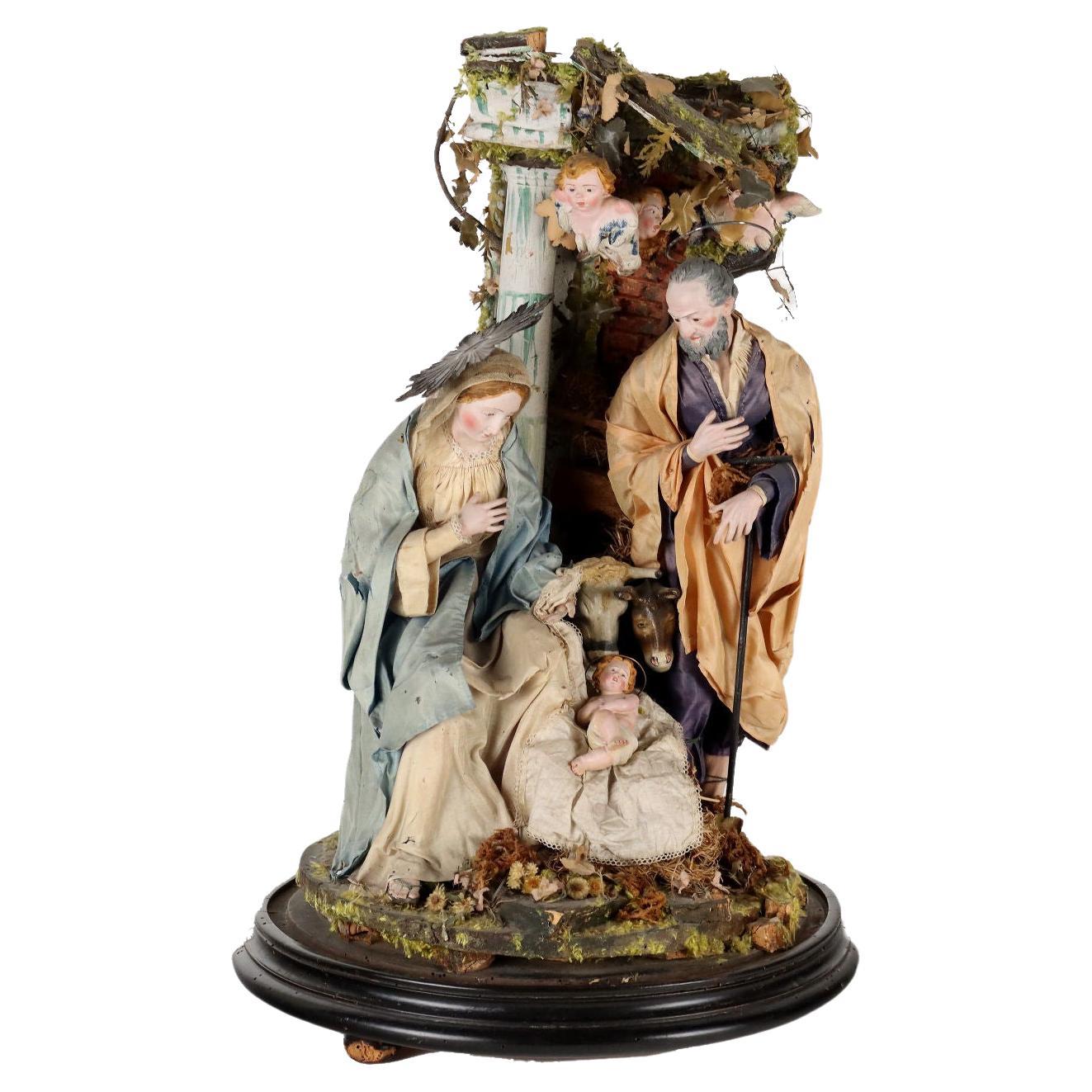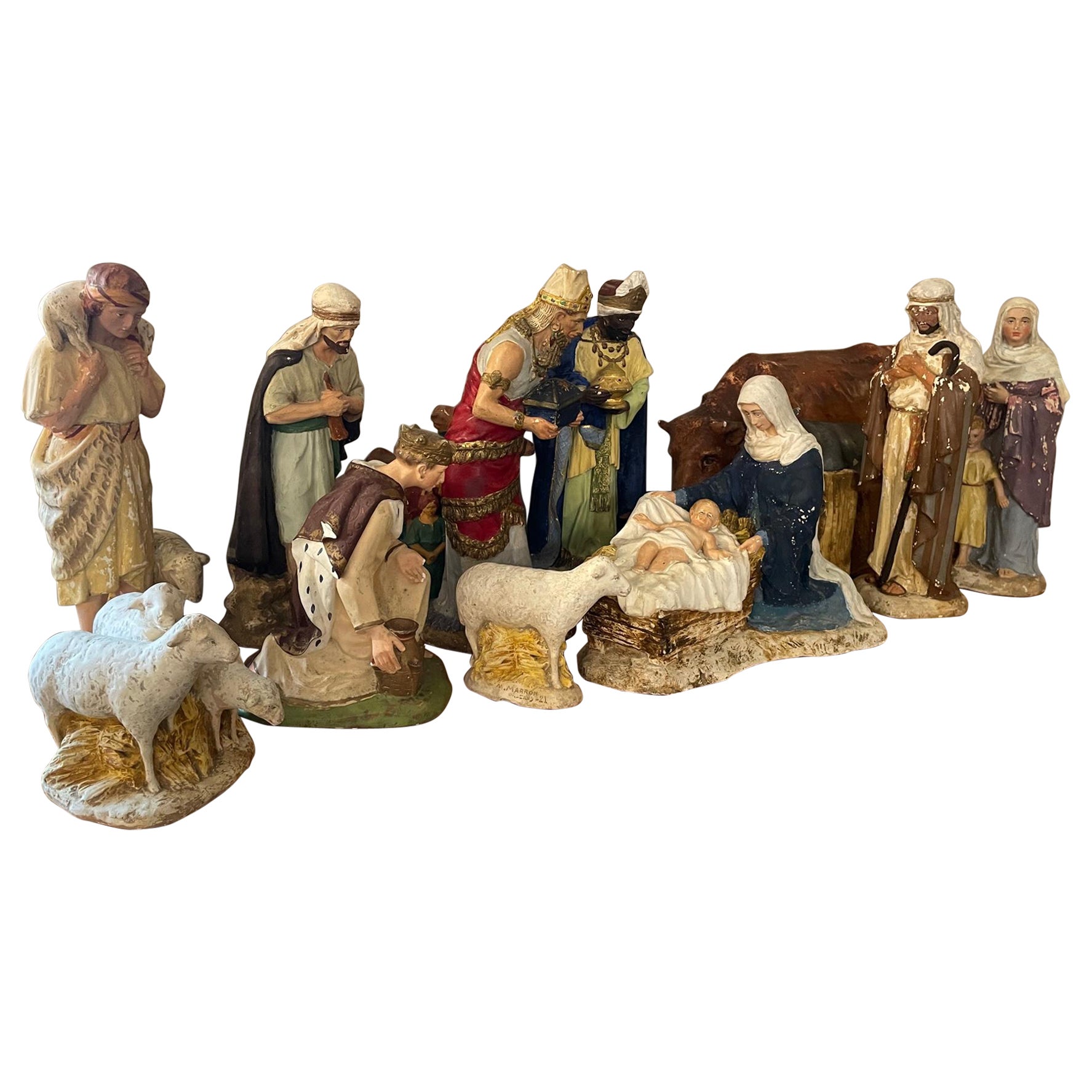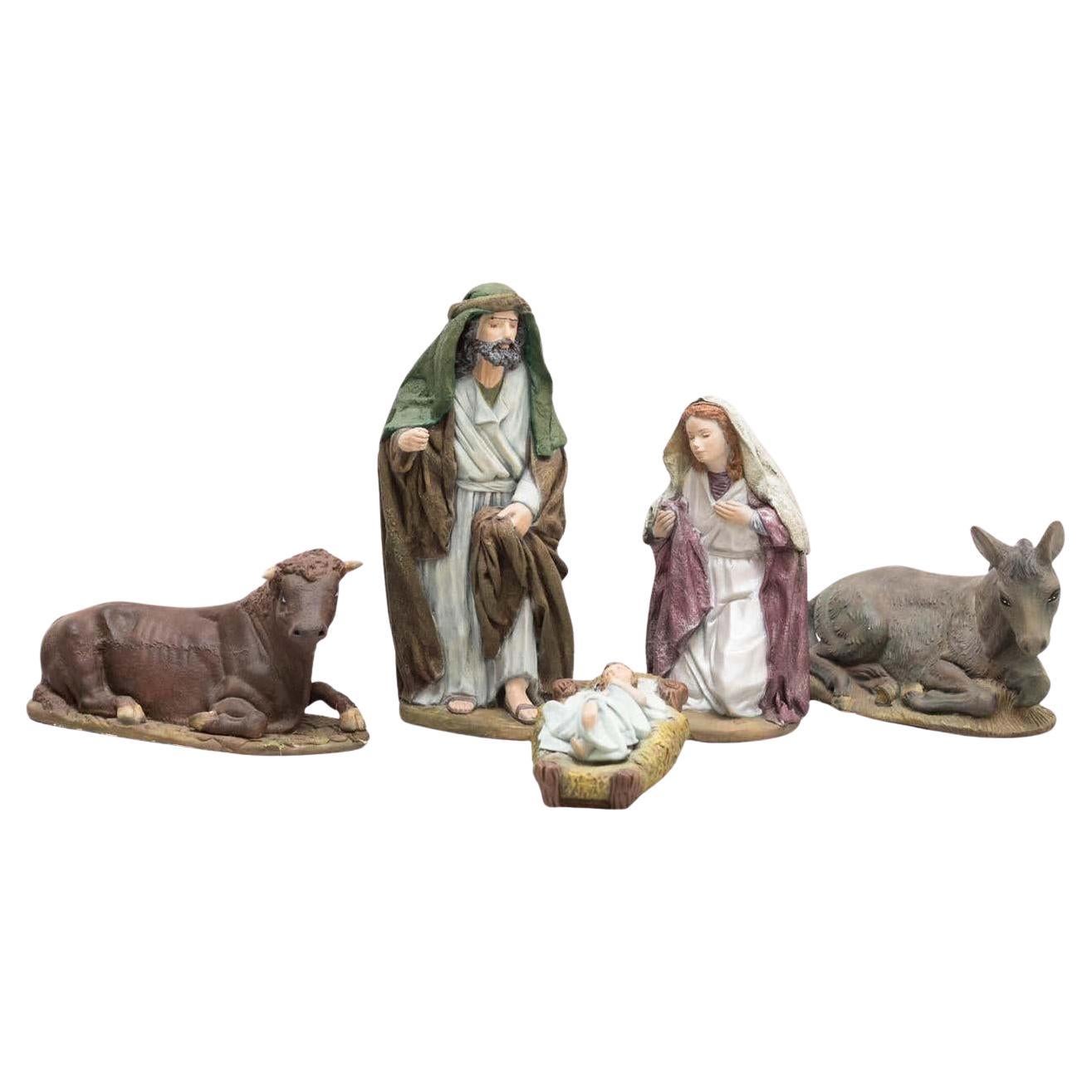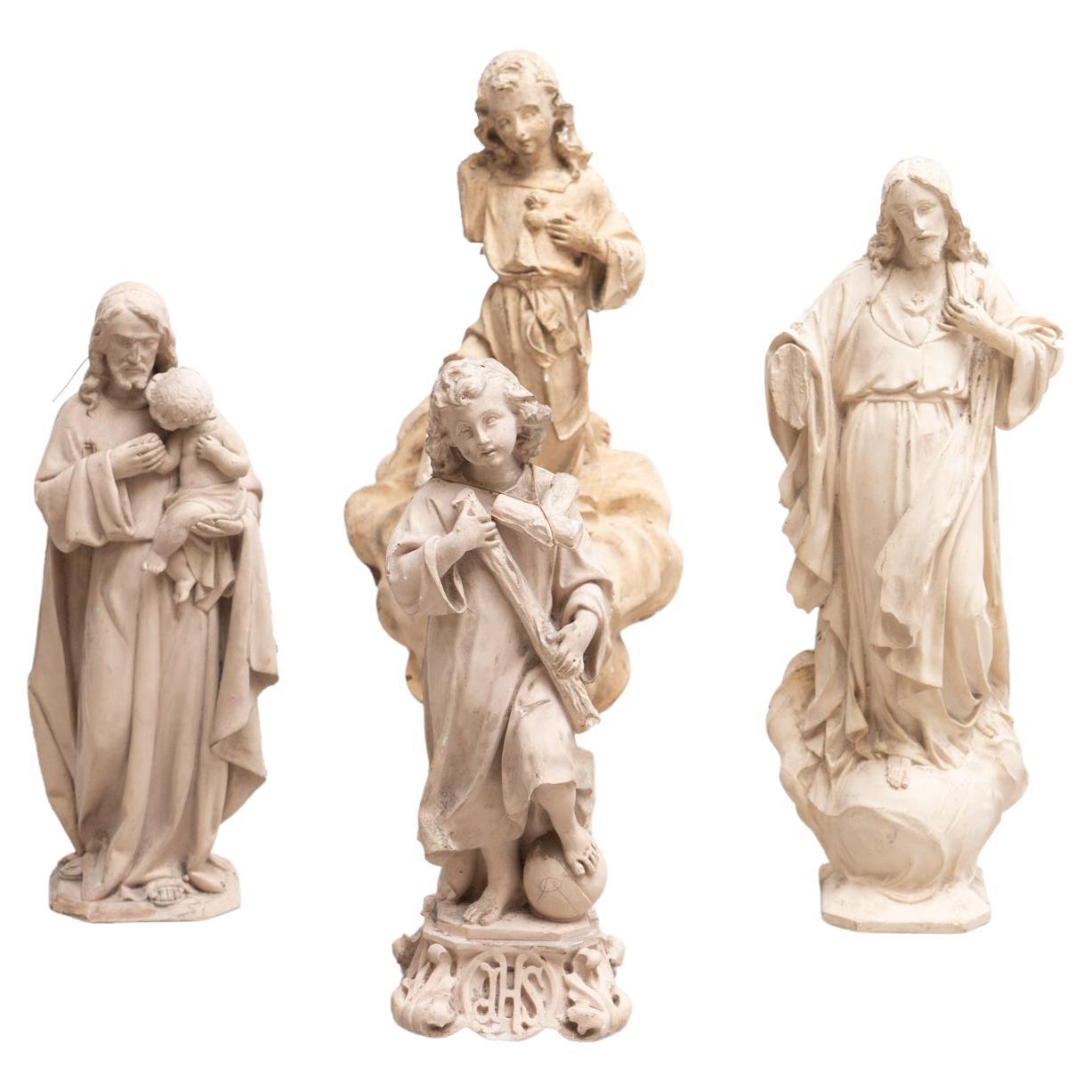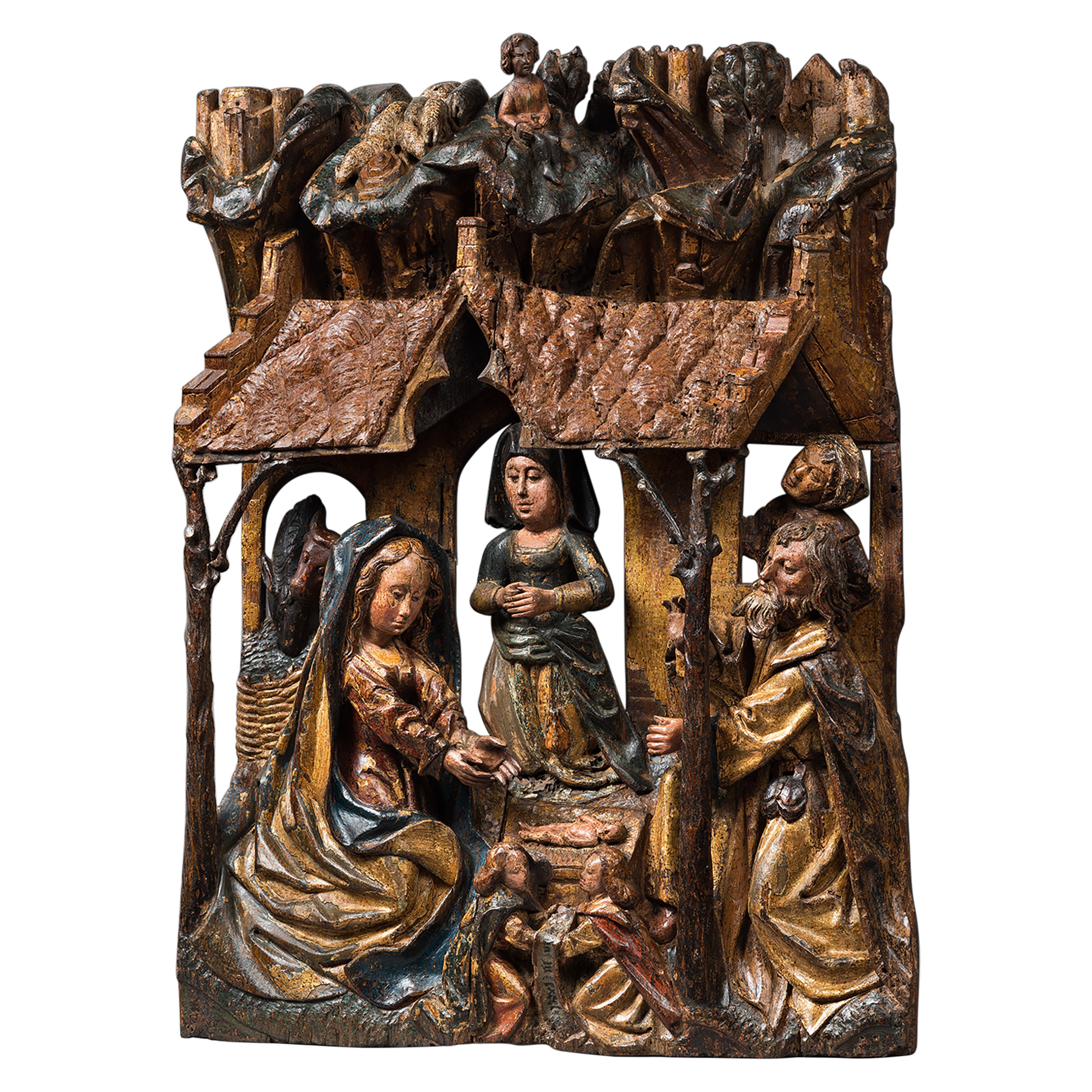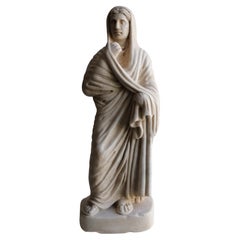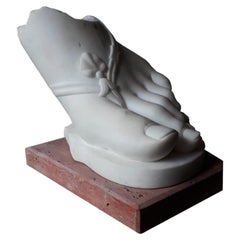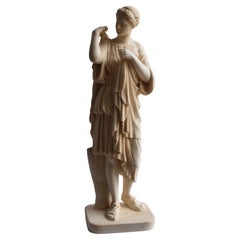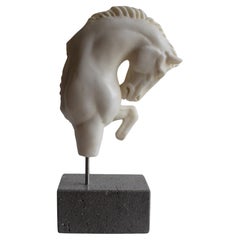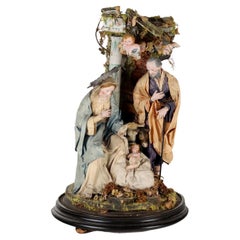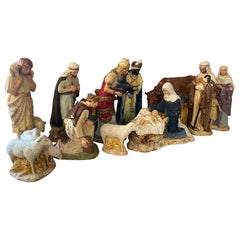Items Similar to White Carrara marble nativity scene - made in Italy
Video Loading
Want more images or videos?
Request additional images or videos from the seller
1 of 10
White Carrara marble nativity scene - made in Italy
$566.91
£426.79
€480
CA$780.95
A$874.62
CHF 456.36
MX$10,683.06
NOK 5,806.23
SEK 5,473.07
DKK 3,653.82
About the Item
Christmas decorations, Nativity, nativity scene, Christmas nativity scene, Italian marble nativity scene, marble nativity scene, white carrara marble, carved nativity scene, Italian tradition nativity scene carved on marble
Nativity scene, nativity scene, carved on white carrara marble.
collector's piece.
Created in the Todini laboratory in Tarquinia, quality certified by the Lazio region
- Creator:Laboratorio Todini (Artist)
- Dimensions:Height: 7.88 in (20 cm)Width: 5.91 in (15 cm)Depth: 3.15 in (8 cm)
- Style:Folk Art (In the Style Of)
- Materials and Techniques:
- Place of Origin:
- Period:
- Date of Manufacture:2005
- Production Type:New & Custom(Limited Edition)
- Estimated Production Time:Available Now
- Condition:
- Seller Location:Tarquinia, IT
- Reference Number:1stDibs: LU9536241822732
About the Seller
5.0
Gold Seller
Premium sellers maintaining a 4.3+ rating and 24-hour response times
1stDibs seller since 2023
22 sales on 1stDibs
Typical response time: 4 hours
- ShippingRetrieving quote...Shipping from: Tarquinia, Italy
- Return Policy
Authenticity Guarantee
In the unlikely event there’s an issue with an item’s authenticity, contact us within 1 year for a full refund. DetailsMoney-Back Guarantee
If your item is not as described, is damaged in transit, or does not arrive, contact us within 7 days for a full refund. Details24-Hour Cancellation
You have a 24-hour grace period in which to reconsider your purchase, with no questions asked.Vetted Professional Sellers
Our world-class sellers must adhere to strict standards for service and quality, maintaining the integrity of our listings.Price-Match Guarantee
If you find that a seller listed the same item for a lower price elsewhere, we’ll match it.Trusted Global Delivery
Our best-in-class carrier network provides specialized shipping options worldwide, including custom delivery.More From This Seller
View Allsculpture of Roman woman with tunic and stole in white Carrara marble- made Italy
By Laboratorio Todini
Located in Tarquinia, IT
Roman woman sculpture, marble sculpture, Roman matron sculpture, Roman matron sculpture with tunic and stole
carved on white Carrara marble
original sculpture made in Italy
The weigh...
Category
Early 2000s Italian Classical Roman Figurative Sculptures
Materials
Carrara Marble
sculpture of a classical foot -statuary white marble -made in Italy
By Laboratorio Todini
Located in Tarquinia, IT
marble foot, sculpture foot, classical foot, white statuary marble foot.
Classical-style foot fragment sculpture of white statuary marble placed on red travertine base.
▪ Made in Italy
Category
1990s Italian Neoclassical Revival Figurative Sculptures
Materials
Statuary Marble
Diana Gabii, sculpture carved on white Carrara marble, made in Italy
By Laboratorio Todini
Located in Tarquinia, IT
Sculpture of the Diana "Gabii," hand carved on beautiful white Carrara marble.
Made n Italy
The total weight is 23 kg
The sculpture has an "antiqued" treatment, even with special pa...
Category
Early 2000s Italian Classical Roman Figurative Sculptures
Materials
Carrara Marble
Horse head walking -fragment- white marble from carrara -made in Italy
By Laboratorio Todini
Located in Tarquinia, IT
Sculpture, horse sculpture, marble horse, carrara marble sculpture, sculpture made in Italy.
Sculpture of a fragment of an incedent horse in the march
Resting on a basalt and iron b...
Category
1990s Italian Classical Roman Animal Sculptures
Materials
Marble
Relief carved on white Carrara marble_Lupa capitolina -made in Italy
By Laboratorio Todini
Located in Tarquinia, IT
Carved relief on white Carrara marble representing the Capitoline She-wolf suckling the twins Romulus and Remus.
Iconic image of the city of Rome, surmounting the inscription "SPQR,"...
Category
2010s Italian Classical Roman Wall-mounted Sculptures
Materials
Marble
Altorilievo (frammento), di battaglia romana su marmo bianco di Carrara
By Laboratorio Todini
Located in Tarquinia, IT
Scultura, altorilievo, bassorilievo, busto romano antico, arte romana, altorilievo battaglia, arte classica, arte greca, busto, marmo bianco Carrara, scultura classica, altorilievo s...
Category
Early 2000s Italian Classical Roman Wall-mounted Sculptures
Materials
Carrara Marble
You May Also Like
"The Nativity" Italian sculpture signed by Giuseppe Armani
Located in Cincinnati, OH
"The Nativity" Italian sculpture signed by G. Armani
The piece is mounted on a wood base with a brass plate "G. Armani"
The back is marked 1983 Florence and also an "N" with a crown ...
Category
Vintage 1980s Italian Figurative Sculptures
Materials
Porcelain, Wood
$556 Sale Price
20% Off
Great Neapolitan Nativity Scene Ancient Architectural Capriccio '800
By Non-Standard Furniture and Lighting
Located in Milano, IT
On a round base is placed the nativity composed of the Holy Family with the ox and donkey, three cherubim fly to heaven. The seated Madonna and St. Joseph standing turn an adoring ga...
Category
Antique Early 1800s Italian Other Figurative Sculptures
Materials
Terracotta, Silk, Wood, Cork
Early 20th century French Plaster Nativity Scene Figurines signed Marron, 1920s
Located in LEGNY, FR
Very nice and rare 20th century French set of plaster nativity scene figurines.
Twelve pieces are representing the religious nativity characters and the animals.
Large dimensions. ...
Category
Vintage 1920s French Figurative Sculptures
Materials
Plaster
$3,023 Sale Price / set
20% Off
Set of 5 Vintage Nativity Scene Figures, Handcrafted in Barcelona, 1960
Located in Barcelona, ES
Set of 5 Vintage Nativity Scene Figures, Handcrafted in Barcelona, 1960 – Traditional Spanish Art in Plaster.
Add a charming touch of traditional craftsmanship to your collection wi...
Category
Vintage 1960s Spanish Mid-Century Modern Busts
Materials
Plaster
$268 Sale Price / set
65% Off
Set of Four Traditional Plaster Figures , circa 1950
Located in Barcelona, ES
Set of 4 traditional religious plaster figures. Made in traditional Catalan atelier in Olot, Spain, circa 1950. In original condition, with minor wear consistent with age and use, ...
Category
Vintage 1950s Spanish Modern Religious Items
Materials
Plaster
$1,275 Sale Price / item
70% Off
Late 15th Century Polychrome Wood Carving Depicting the Nativity
Located in Saint-Ouen, FR
While the birth of Christ is briefly told in the Gospel of Luke (2, 7) it is in the apocryphal texts that we find most of the elements and details that have then inspired artists. As of the 14th century and even more of the 15th century the subject of the Adoration of the Child replaces in Western art the scene of the Birth, much favoured in Byzantine art. Instead of being depicted lying with the new-born swathed in the manger, the Virgin is now kneeling, her hands joined in prayer in front of the naked child. This change was probably hastened by the popularity of the visions of Saint Bridget of Sweden to whom the Virgin allegedly appeared to show how she had given birth to Jesus (Visions, VII, chap. 21).
Sheltered by a thatch-roofed structure the Virgin is kneeling in front of the Child Jesus. She wears a magnificent red dress under a large gold cloak. Her curled blond hair is partially veiled. The newborn is lying on a straw mat. Joseph is depicted with a parted beard and stands opposite from the Virgin. He wears a tunic and a coat with a purse hanging from the belt. His costume reminds us of the long journey him and Mary have accomplished to reach Bethlehem.
Two other women are present. One is looking through the stable’s window to observe the Holy Family while another one kneels in prayer in front of the divine child. The rich costume of the lady might indicate she is a donator.
However they could also both represent the women who took part in the birth of Christ, Zelemi and Salome. Salome, incredulous did not believe in the virginal conception of Mary and she is represented far from the scene. The artist has depicted her with an expression of doubt on her face. Zelemi, on the contrary, is a believer. She is rewarded by a place of honour at the heart of the scene, close to Mary.
To the left the donkey and ox that have accompanied Mary and Joseph to Bethlehem observe quietly the scene.
On the foreground two angels hold a scroll reading an excerpt from the Gloria : “/Gloria/ in excelsis /Deo/.” One of the angels wears a blue cape while the other’s is red Those two colours are very significant as during Middle-Ages blue symbolises hope and red charity. Together they express the hope in redemption thanks to the advent of Christ and his sacrifice to come.
Above the main scene, up a cliff, a small shepherd lets his herd of sheep graze amidst the trees. He is framed by two walled cities.
This wood carving is the work of a very skilled and inventive artist. The piece bears witness to his exceptional talent. The realism of the scene is emphasised by the amount of details depicted. The refinement of the carving itself is highlighted by the well preserved polychromy.
This key moment of the New Testament is set in a contemporary context thanks to the clothes of the characters and the scenes of rural life. The universal dimension of the scene is intensified while allowing contemporary viewers to grasp its meaning more easily.
This care for details, the picturesque realism as well as the extraordinary rendition of the cloths suggest it was made by a Flemish artist during the late 15th century.
This relief can be compared with the panel of the Nativity from the Saint-Vaast altarpiece made by Jacques Daret between 1433 and 1435, today in Madrid’s Thyssen-Bronemisza Museum.
Literature
Louis Réau, Iconographie de l’Art chrétien...
Category
Antique 15th Century and Earlier Dutch Gothic Figurative Sculptures
Materials
Wood
More Ways To Browse
Miniature Sewing Machine
Admiral Bar
Miniature Bronze Cannon
Salesman Sample Box
Antique Skylight
Builders Model Ship
German Tv Tower
Model Speed Boat
Old Vintage Badges
Vintage Boat Propeller
Miniature Monuments
Ship Model Diorama
Brendel Model
Chinese Quartz Flowers Cloisonne
Ferrari Engine
Model Steam Engines
Ships Capstan
Miniature Staircase

